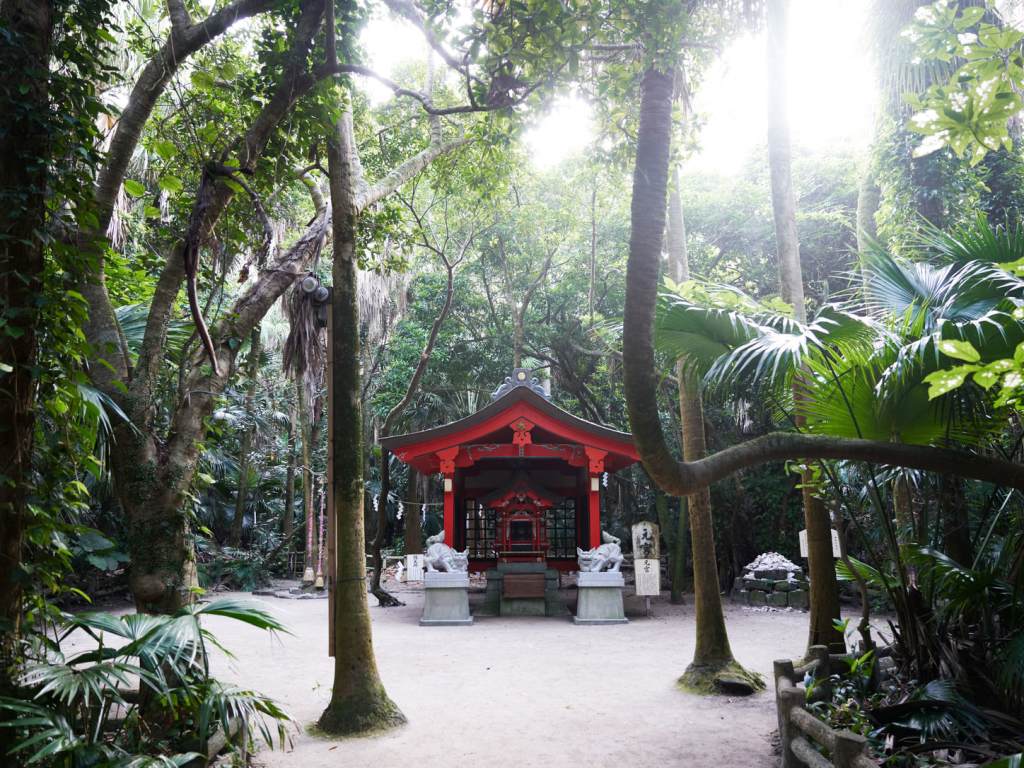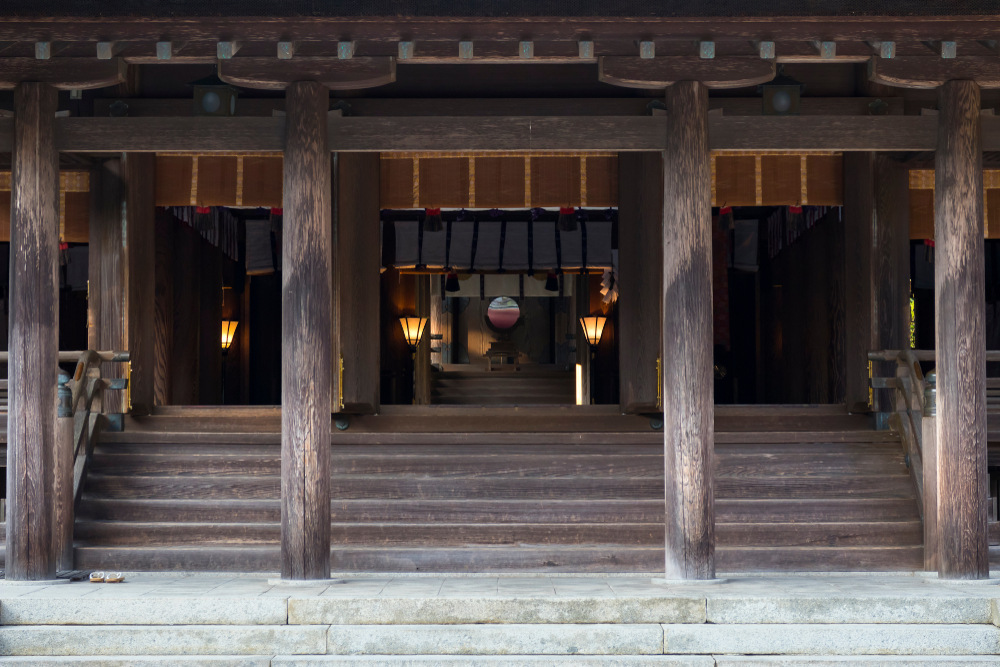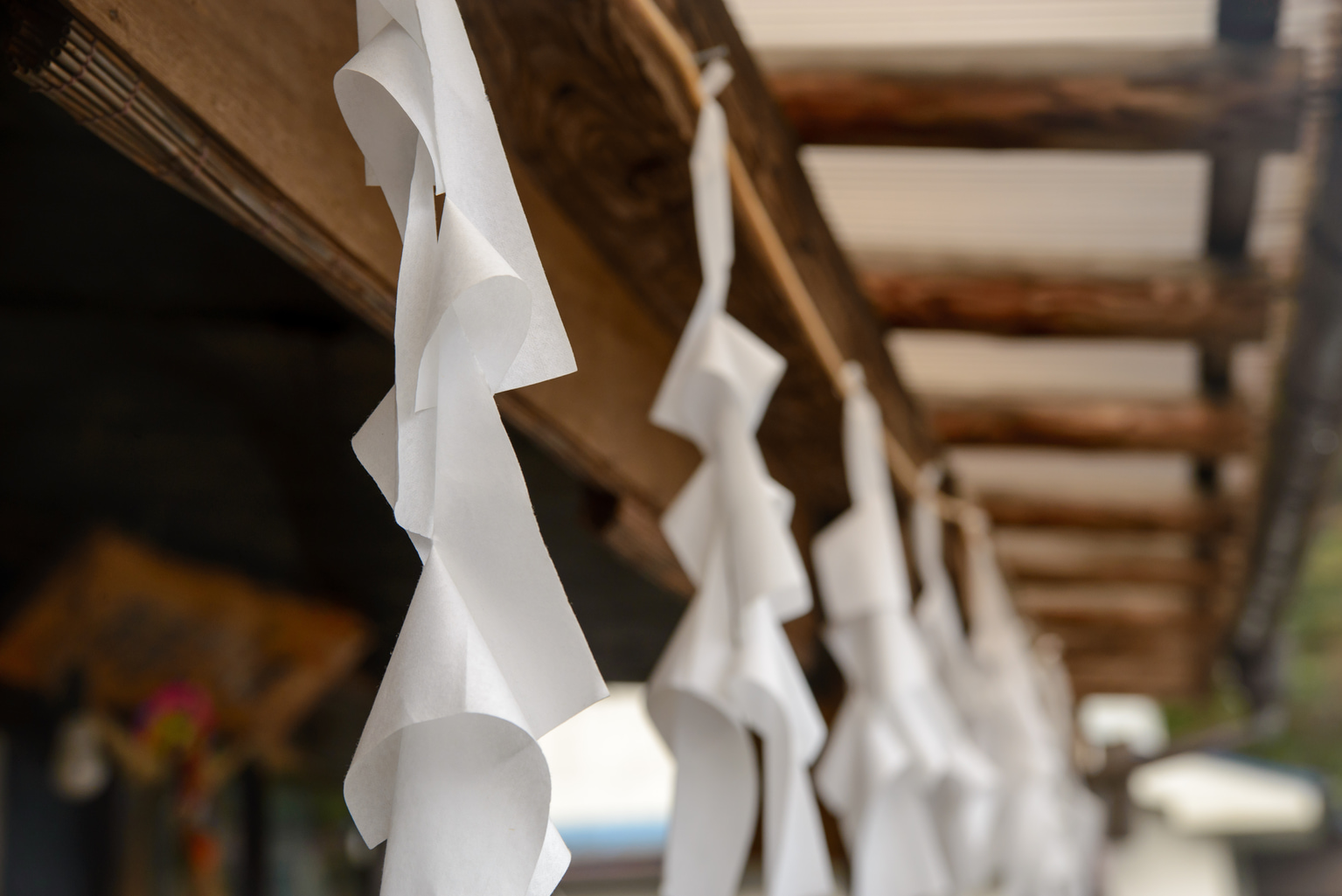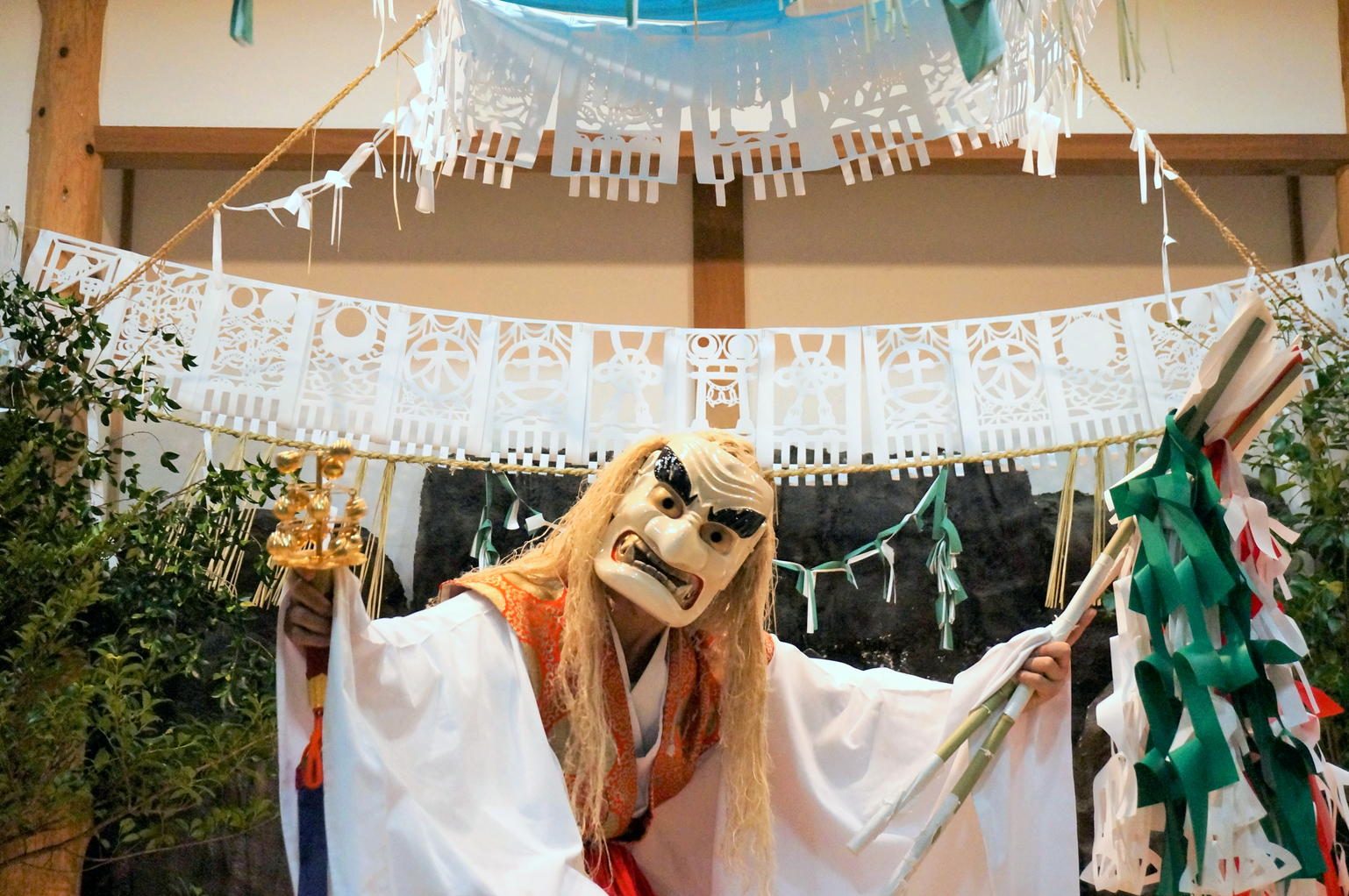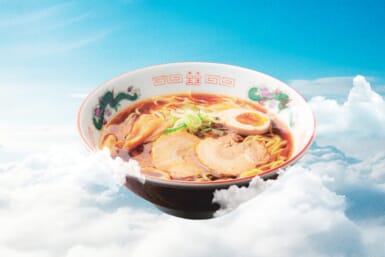In just under two hours, my travel party and I have swapped Tokyo for palm trees, sea breezes and easy sunshine. Located on Kyushu Island, Miyazaki Prefecture offers a unique blend of history, legend and natural beauty. For starters, we stop by Palm Fresh Juice in the airport to sample a true local flavor: hyuganatsu. The sun-bright yellow citrus takes part of its name from Hyuga, Miyazaki’s former name, meaning “facing the sun.” Sweet, tart, and refreshing, it’s just one example of the bounty Miyazaki’s tropical climate allows.
As we set out to our first destination, city turns to fields, rivers, rolling hills and forested mountains. According to legend, Miyazaki is where Izanami and Izanagi, the two gods that created the islands of Japan, settled after marriage. It is also the birthplace of the sun goddess, Amaterasu. Celestial tales of love, betrayal and epic journeys combine with human narratives of battle and drama. It seems that in Miyazaki, the division between heaven and earth, divine and mortal blurs. Here, the magic is real.
Indigo and Hiyashiru
When we arrive at Sarukawa Community Center, three members of the Sarukawa Mottainaka Club usher us inside to reveal the techniques of aizome (indigo dyeing) and hiyashiru, a cold soup and rice dish that is a Miyazaki specialty.
As we don aprons, one member explains the history of indigo. Used since the early 1600s by samurai for its anti-bacterial properties and deodorizing effects, indigo was part of everyday culture by the 1700s and a local cash crop. Replaced by modern techniques, the members of the Mottainaka Club believe aizome still has practical and creative value.
As our workshop proceeds, we scrunch and bind white tenugui (rectangular cotton towels) in hopes of creating attractive patterns. We plunge our creations into bubbling vats of indigo and hold our breath against the sulfur-like smell. Fermentation, our teacher explains as we head for the kitchen, releases the dye from the plant.
There, we chop vegetables and wash rice for the hiyashiru. Originally developed as a refreshing meal for farmers, it combines the richness of sesame with miso, dried fish and seasonal vegetables. We watch our teacher grind sesame in the ridged interior of a suribachi (grinding bowl) and then line it with miso. She then momentarily turns it upside down to roast over a gas burner. Water, generous pieces of tofu, cucumbers and a handful of other ingredients are added and set to chill as we return to our aizome.
Exclamations of surprise ripple around the room as our pieces turn from turquoise to deep blue as we rinse them under cold water. We leave them to dry and return to the kitchen where, stomachs growling, we pour the hiyashiru over rice and enjoy it with tender bites of pork from the nearby town of Takaoka. Dessert is brandied chestnuts and frozen plums, homemade by the Mottainaka members and a perfect finish.
Miyazaki Shrine
With full stomachs and artwork in hand, we return to Miyazaki City to visit Miyazaki Shrine. A tree-covered oasis, Miyazaki Shrine houses the spirits of Emperor Jimmu, Japan’s first ruler, and his parents. A Shinto priest leads us through a purification ritual before guiding us into the main hall. There, a miko (shrine maiden) performs a traditional dance that is mesmerizing and otherworldly. We bow and offer a sakaki branch to Emperor Jimmu’s spirit in thanks.
Afterward, the priest teaches us to make shide, the zig-zag shaped white papers that hang from woven ropes at shrines. Seated on the rich red carpet of an auxiliary building, we lose ourselves in the shide’s intricacies until it is time to go. We reluctantly rise to leave such a peaceful place.
Dinner and Kagura
We drop our bags at our hotel and decide to have dinner at Amimoto. The izakaya’s non-descript exterior belies the culinary showcase inside. We savor crispy chicken nanban, sashimi and a never-ending stream of seasonal side dishes before heading to our next adventure at nearby Aoshima Shrine.
In the shrine hall, we are swept up in a tale of brave daring at sea as another Shinto priest, this time from a small, neighborhood shrine, and his son perform one of the kagura dances passed down through their family for four centuries. A precursor of noh and kabuki, kagura dances were first performed in the Imperial Court as part of Shinto ceremonies. Gradually, locals created their own called satokagura (country kagura) that remain a vital part of local customs. Afterward, we try on the heavy silk costumes and 300-year-old masks of horse hair and leather before attempting a step or two ourselves.
Eventually, we go to sleep sated with story and food alike as the moon rises over the bay and white caps scribble on the sand.
Sunrise at Aoshima Island
Stars shimmer as we cross the stone bridge to Aoshima to greet the dawn and get a look at the Oni no Sentaku Ita (the Devil’s Washboard). A natural rock formation, the washboard runs in thick straight lines north and south under the island. As the first rays appear, we fall silent to take in the effervescent sky and sea before turning toward the shrine.
Nestled in the center of the island and its dense forest of Biro palm trees, is a small, colorful shrine dedicated to Hohodemi (an ancestor of Japan’s first emperor) and his wife, the sea goddess Toyo-Tama-hime. Now, with the toss of a small clay disc and a heartfelt wish, their spirits offer aid to the lovelorn.
Surfers plunge into the waves as we return to enjoy the resort’s vast breakfast buffet. That, and a morning dip in the onsen, gets us ready for the rest of the day. 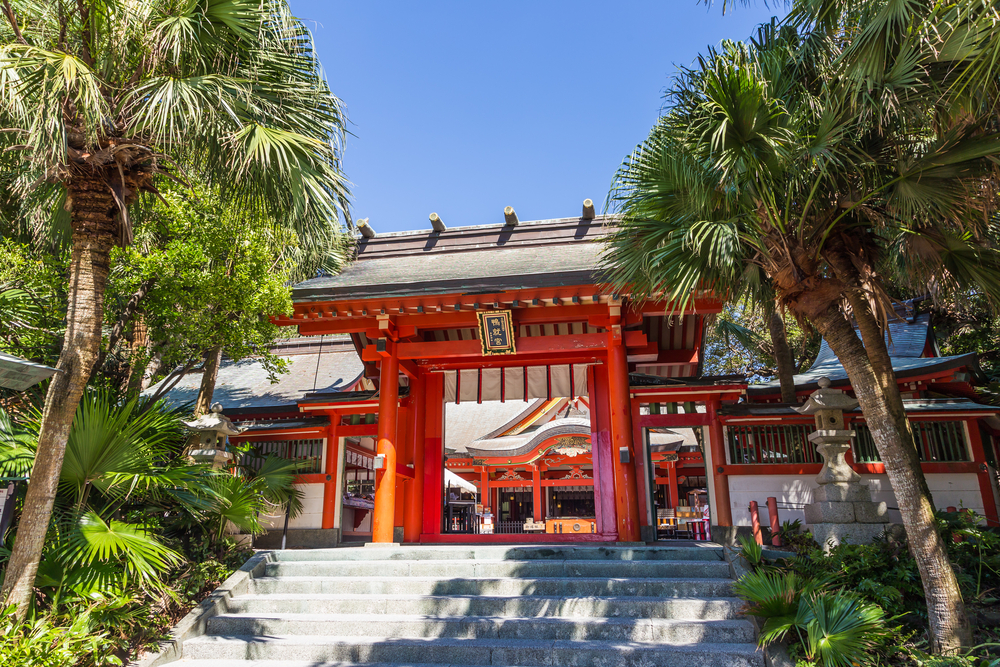
Sweet, Sweet Miso
Refreshed, we arrive at Kanena Miso and Soy Sauce Brewery. The fourth generation of her family to run the brewery, Yoko Nagatomo Shiomi and her husband, Yuichiro, take turns explaining the fermentation process, of how koji (a mold grown on rice) and soy beans metamorphose into these two culinary staples of Japanese cuisine.
In business for 140 years, there is high regard for tradition and craft, but there is also innovation. As we walk through the brewery, we sample a new recipe for amazake, a sweet, non-alcoholic version of the beverage made with sake lees, as well as a soy sauce fermented for eight years. Both receive our enthusiastic approval.
Sipping Shochu
No visit to Kyushu and Miyazaki would be complete without shochu, the preferred local beverage. Toshiro Kawano, a third-generation owner of a local sake shop, joins us at Ogata restaurant to guide us through a tasting. Most often distilled from sweet potatoes, rice or barley, shochu packs a punch akin to whisky. Miyazaki’s tropical climate is a bit too warm for fermenting sake, but it is ideal for growing shochu’s ingredients.
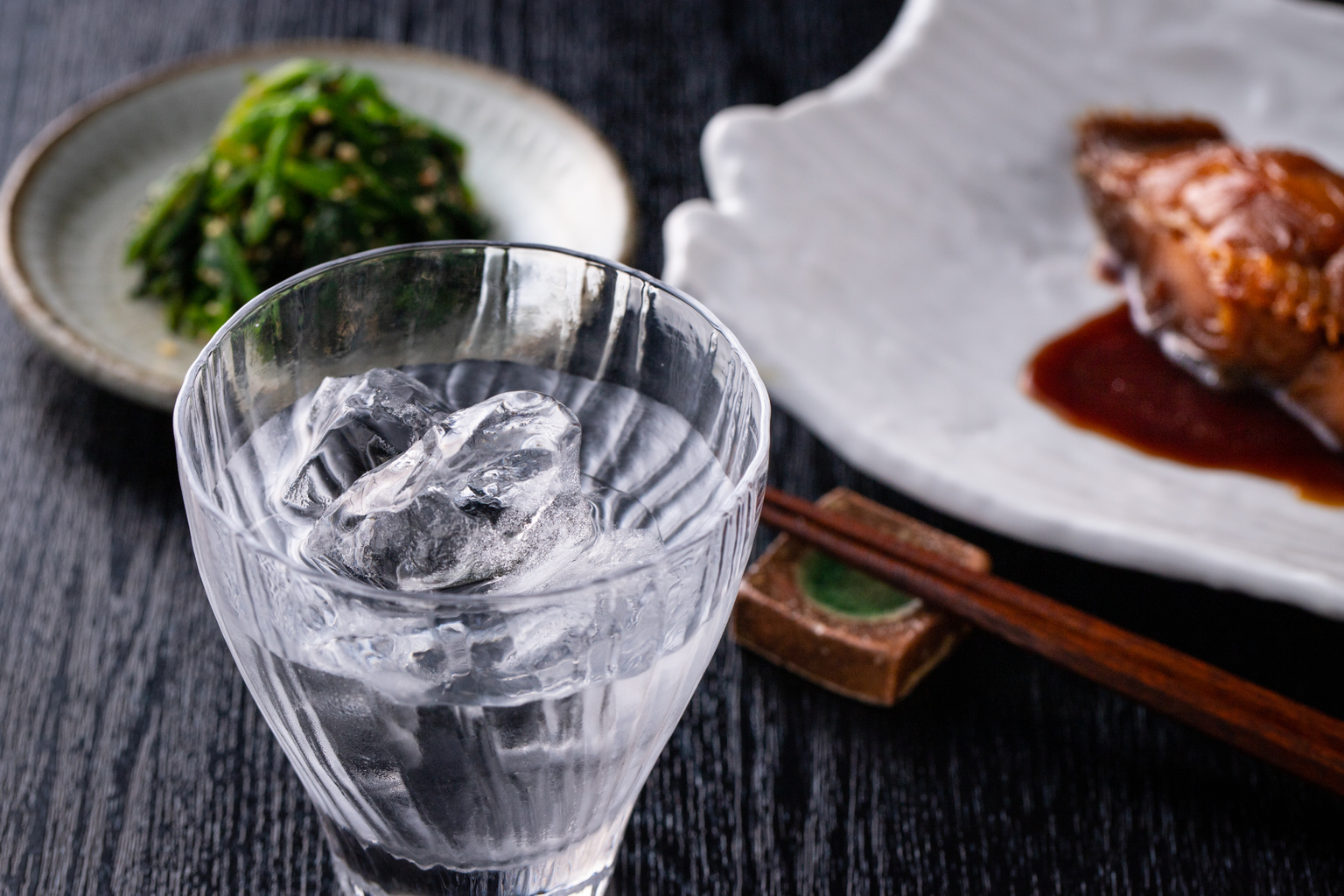
In between bites of tender Miyazaki beef, chicken and seasonal vegetables, we sip Ouka’s sharp-tasting sweet potato shochu, Kagamizu’s biting yet very drinkable ginger shochu, and Miyonomatu’s bitter chestnut shochu.
We wish we could stay for one more day. However, our plane and real life awaits…
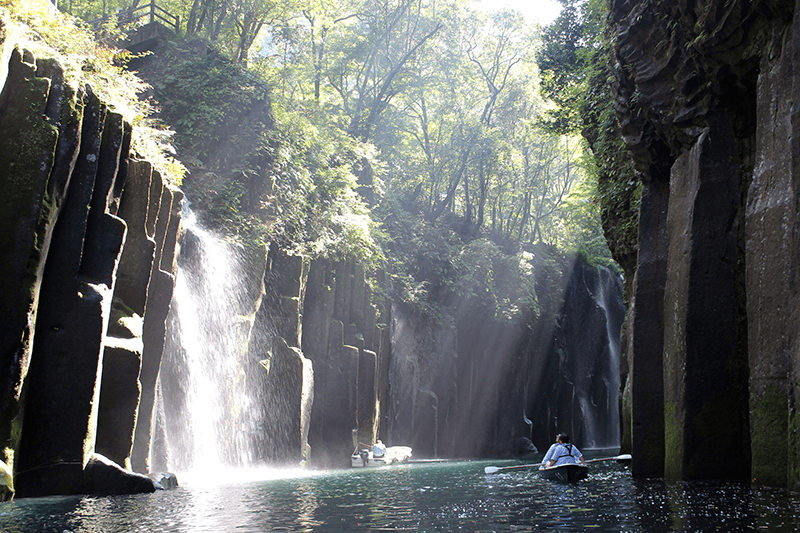
DISCOVER THE BIRTHPLACE OF JAPANESE MYTHOLOGY
Shore Excursion to Takachiho in Miyazaki with a Private Car
For an extra 5% off use our coupon code TOKYOWEEKENDER during check-out.

